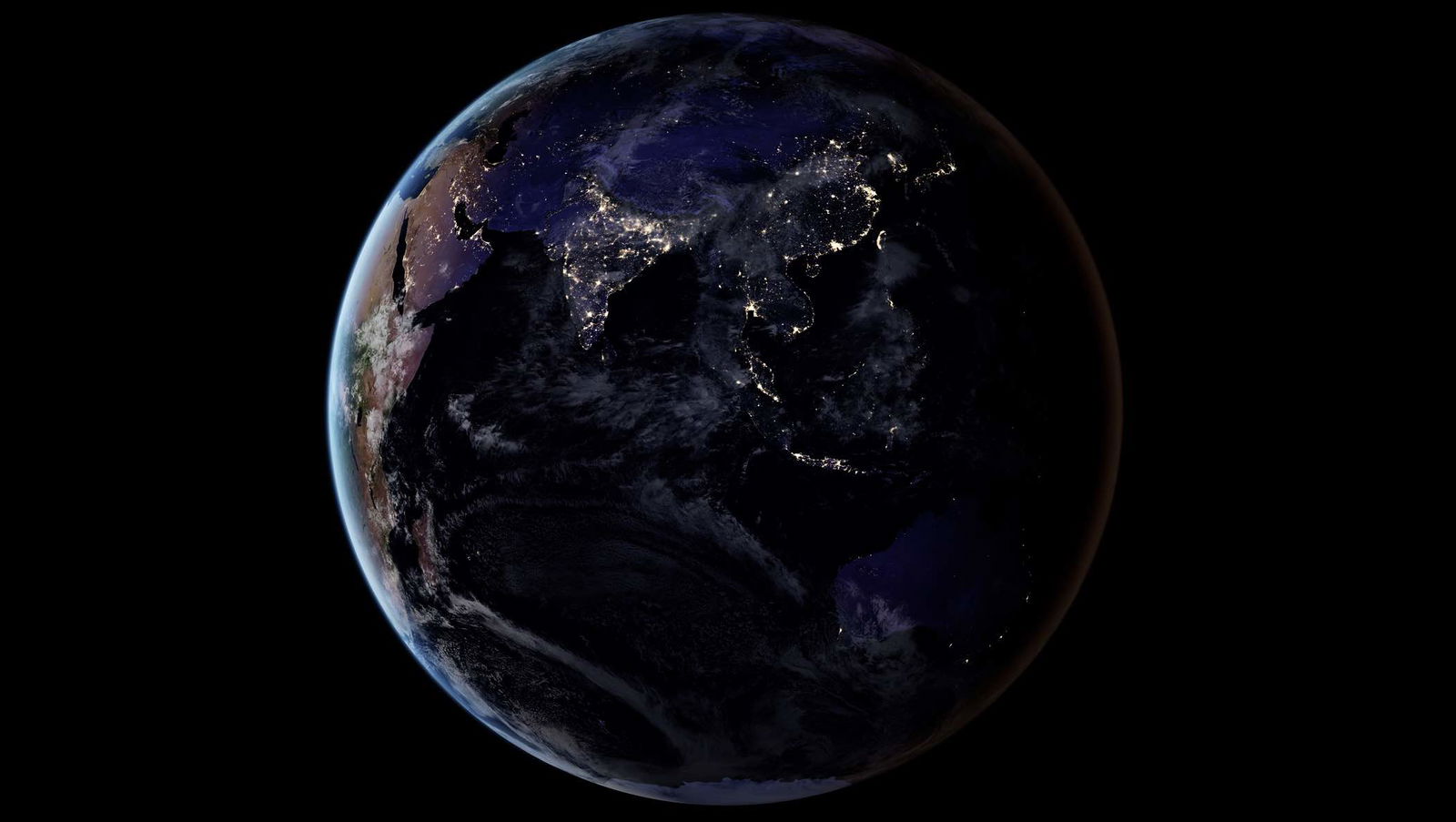Scientists from the SETI (Search for Extraterrestrial Intelligence) Institute have evaluated the possibility that aliens at a similar technology level to humans could see signs of Earthly innovation from space.
The research team also examined which technosignatures might be visible and at what distance technology like ours would detect them.
Which Human TechnoSignatures Would Aliens See?
When searching for signs of life on other planets, scientists look for trace gases and other atmospheric elements that could indicate biological processes. These are known as biosignatures, and the James Webb Telescope can detect some of these chemical “fingerprints” of life from across great astronomical distances.
Several planned or ongoing attempts to look for biosignatures around exoplanets are underway, including evaluations of rocky worlds like those in the TRAPPIST-1 planetary system over 40 light years from Earth. Thus far, none of those efforts have found definitive proof of alien life.
While astrobiologists are looking for biosignatures, scientists from SETI have been looking for technosignatures—signs of alien technology—for decades. The initial efforts scanning for radio signals began in the 1960s, including the famous WOW signal detected in 1977, which has since been determined to most likely have a natural origin. However, several studies and research attempts are ongoing, including a massive radio signal search known as COSMIC SETI.
For example, scientists looking for signs of civilizations significantly more advanced than Earth successfully scanned 2,800 galaxies in one massive effort. Another study looked for signs of hypothetical technological megastructures capable of harnessing stellar energy known as Dyson spheres. More recently, scientists proposed an “Optical SETI” program that could look for alien probes or other non-human technology lurking within 100 million km of Earth. At the same time, another effort searched for urban lights on distant alien worlds. Yet another study scanned the TRAPPIST-1 planetary system for radio signals, although none of these studies have found evidence of extraterrestrial technology.
In this latest effort, SETI scientists decided to take a different approach. Instead of looking for signs of life or technology in the cosmos, they studied which of humanity’s technologies might be visible to aliens armed with a level of technology comparable to humans. According to the project scientists, this new approach was designed to evaluate our present level of capability, the scope of that ability when searching for technosignatures, and possible improvements to those methods.
“Our goal with this project was to bring SETI back ‘down to Earth’ for a moment and think about where we really are today with Earth’s technosignatures and detection capabilities,” said Macy Huston, study co-author and postdoc at the University of California, Berkeley, Department of Astronomy, in a statement. “In SETI, we should never assume other life and technology would be just like ours, but quantifying what ‘ours’ means can help put SETI searches into perspective.”
Analysis Reveals Strongest Signals are detectable up to 12,000 light years away
Led by Dr. Sofia Sheikh of the SETI Institute, in collaboration with the Characterizing Atmospheric Technosignatures project and the Penn State Extraterrestrial Intelligence Center, the SETI team used a theoretical, modeling=based method to evaluate whether aliens at a similar technology level to humans could see us. Unlike previous efforts, the researchers analyzed multiple types of technosignatures together rather than studying them separately.
According to the study’s conclusions, aliens at a similar technology level would have the best chance of spotting humanity’s radio signals. The strongest signals, such as the planetary radar emissions from the former Arecibo Observatory, are “potentially visible from up to 12,000 light-years away.”
The study determined that searching for technosignatures in a planet’s atmosphere would be more difficult. For example, nitrogen dioxide emissions that could signal technological processes on the planet below could only be detected by the James Webb Space Telescope or the planned Habitable Worlds Observatory (HWO), which is still in the development stages. According to the study authors, the HWO could spot these emissions in the atmosphere from roughly 5.7 light years away, or “just beyond our closest stellar neighbor, Proxima Centauri.”
The team notes that aliens could also see more human-made technologies from space if they employed similar technologies to ours, including city lights, lasers, heat islands, and satellites. However, these technosignatures would only be observable by a probe or other satellite as they approached Earth since they are too faint for even our most advanced observatories to detect at astronomical distances.
Using SETI as a Cosmic Mirror
Although previous efforts by SETI scientists have looked for the advanced technologies of other hypothetical civilizations, the team’s recent study focused solely on humanity’s current level of technology and whether it might be detectable from afar.
The team says these theoretical exercises, such as their recent effort to recalculate the infamous Drake Equation, are consistent with the institute’s goals of fostering new and innovative approaches to searching for life in the cosmos. In this case, they believe that analyzing whether aliens at a similar level of technology to humans could spot us offers an entirely new perspective on the search for life in the cosmos.
“One of the most satisfying aspects of this work was getting to use SETI as a cosmic mirror: what does Earth look like to the rest of the galaxy? And how would our current impacts on our planet be perceived,” said Sheikh.
“While, of course, we cannot know the answer, this work allowed us to extrapolate and imagine what we might assume if we ever discover a planet with, say, high concentrations of pollutants in its atmosphere.”
The study “Earth Detecting Earth: At What Distance Could Earth’s Constellation of Technosignatures Be Detected with Present-day Technology?” was published in The Astronomical Journal.
Christopher Plain is a Science Fiction and Fantasy novelist and Head Science Writer at The Debrief. Follow and connect with him on X, learn about his books at plainfiction.com, or email him directly at christopher@thedebrief.org.

